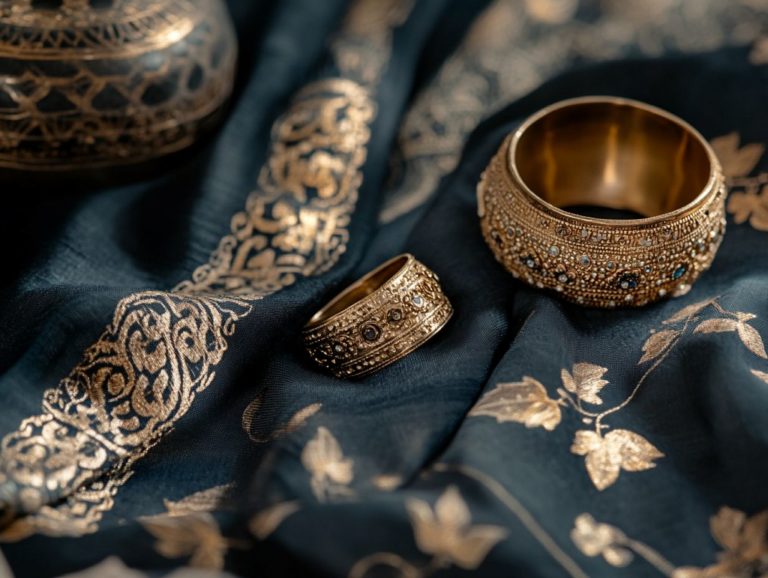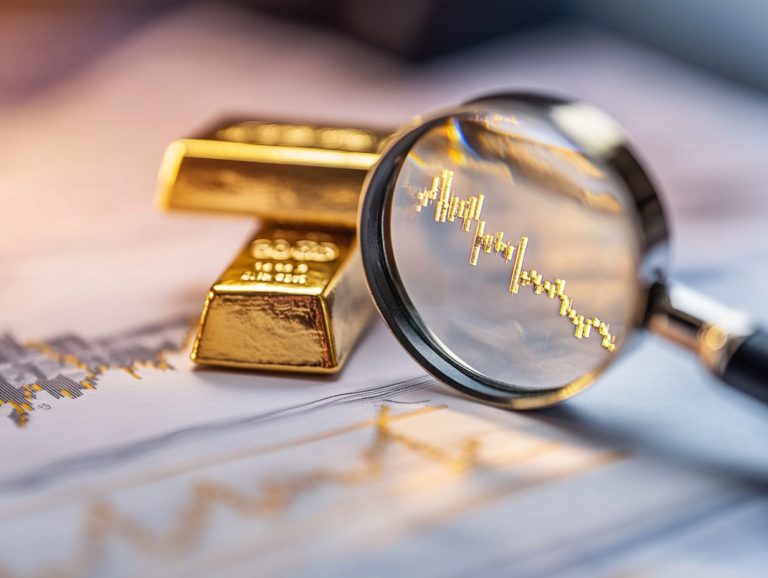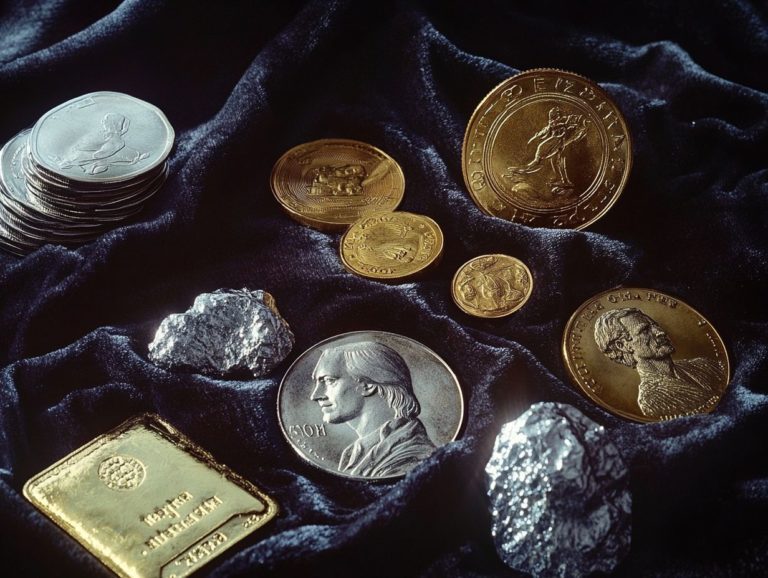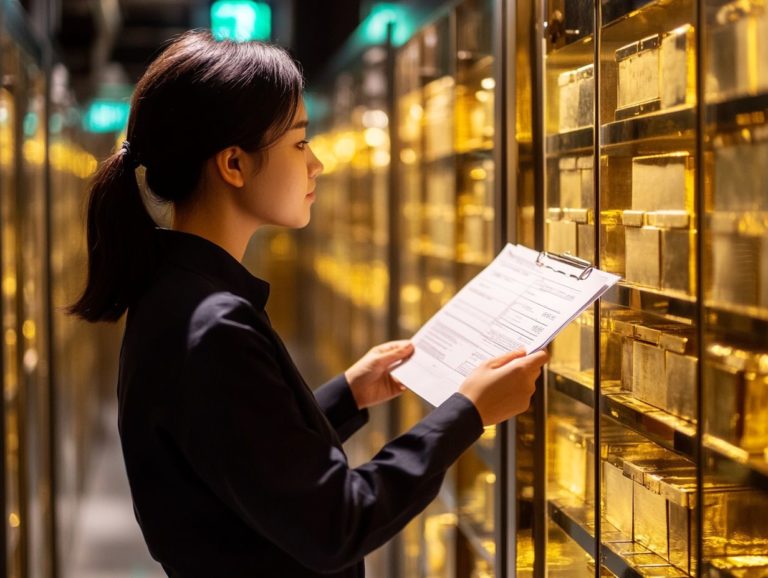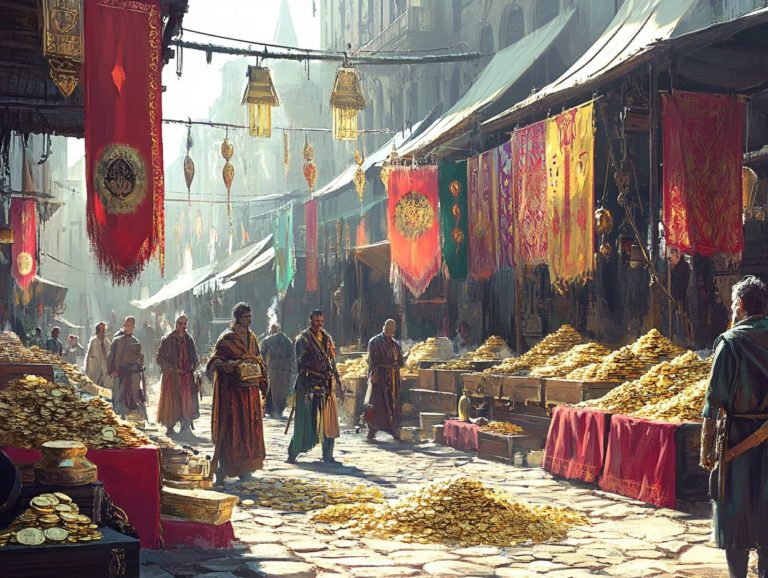What is the Role of Jewelry in Precious Metal Investment?
Investing in precious metals, particularly jewelry, presents you with a unique mix of aesthetic appeal and financial potential.
As the market evolves, understanding the basics is crucial for both seasoned investors and newcomers.
This article explores the details of jewelry as an investment option, highlighting its benefits, various types, and key considerations.
With expert tips and insights at your fingertips, you’ll be ready to make informed decisions in this exciting market.
Discover how jewelry can become a vital part of your investment portfolio.
Contents
- Key Takeaways:
- The Basics of Precious Metal Investment
- Why Jewelry is a Popular Investment Option
- Types of Jewelry for Investment
- Factors to Consider When Investing in Jewelry
- Tips for Investing in Jewelry
- Frequently Asked Questions
- What is the role of jewelry in precious metal investment?
- Why do people invest in precious metal jewelry?
- What makes jewelry a valuable form of investment?
- How does the value of jewelry compare to other forms of precious metal investment?
- What should I consider when investing in jewelry?
- What are the risks associated with investing in jewelry?
Key Takeaways:
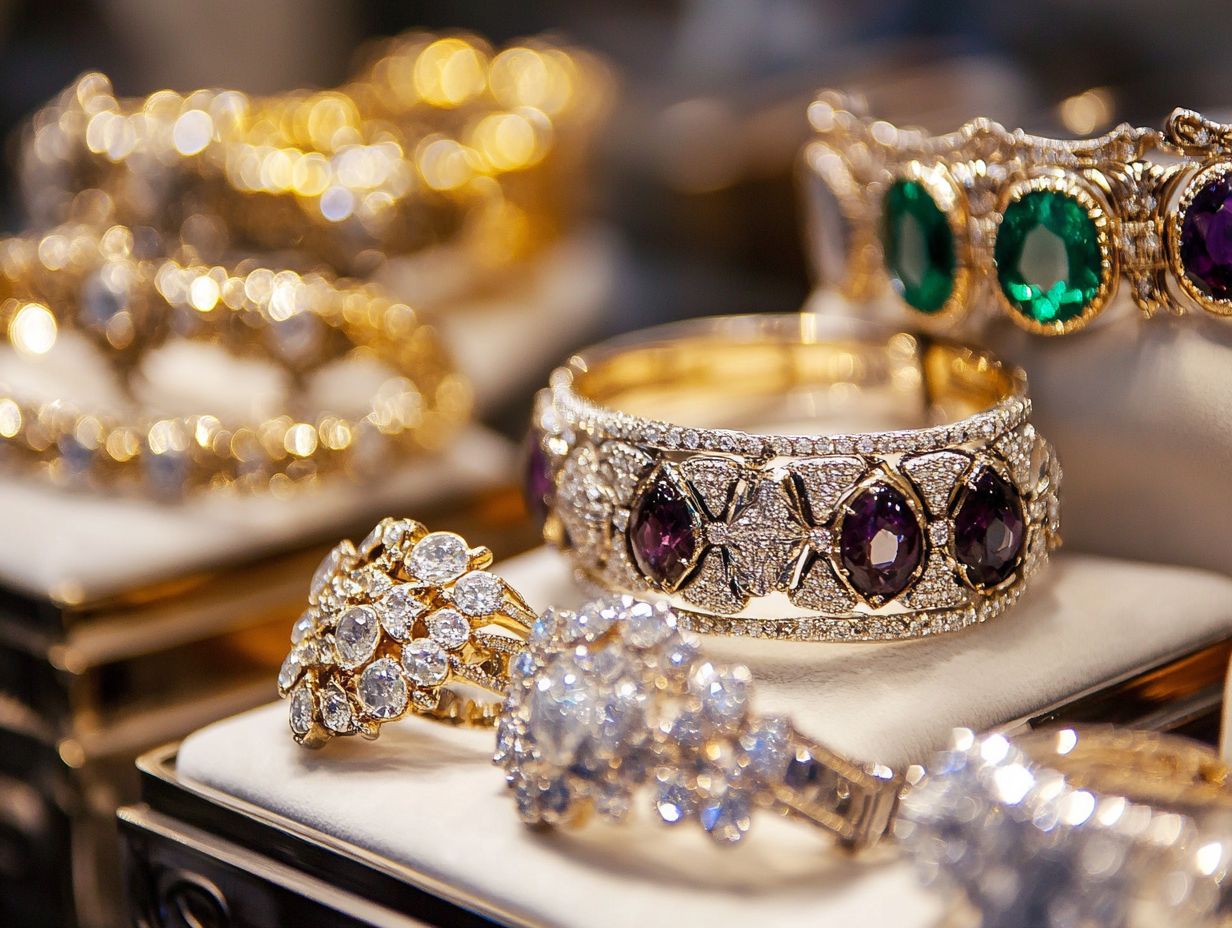
- Jewelry is a popular investment option due to its potential for high returns and its inherent value as a precious metal.
- Consider the quality, authenticity, and market value of jewelry when making investment decisions.
- Seeking expert advice and following best practices can help ensure a successful investment in jewelry.
The Basics of Precious Metal Investment
Investing in precious metals opens the door to a range of valuable assets, including gold, silver, platinum, and palladium. These metals have long been viewed as safe havens during economic uncertainty.
In today’s market, they not only diversify your investment portfolio but also help protect your money when prices rise, known as a hedge against inflation.
Supply and demand directly impact their value, while market conditions and industrial applications cause price fluctuations.
Investing in precious metals positions you wisely in a dynamic financial landscape.
Understanding the Market
Grasping the market for precious metals like gold, silver, platinum, and palladium requires awareness of the many factors driving their prices.
This includes economic indicators such as inflation rates, interest rates, and currency strength, which influence investor sentiment.
Global events like geopolitical tensions and economic crises can also increase volatility in these precious metals.
If you’re looking to navigate this complex landscape, commodity ETFs offer an easy way to invest in precious metals without buying the physical items.
Keeping a close eye on current market conditions is essential for making savvy investment choices and seizing opportunities.
Why Jewelry is a Popular Investment Option
Jewelry investment is surging in popularity! Its intrinsic value and the charm of precious metals like gold and silver make it an attractive choice.
When you invest in jewelry, you enjoy a unique blend of aesthetic beauty and investment potential.
Pieces from renowned brands like Cartier and Bulgari are especially notable, as they tend to retain their value and can appreciate over time, making them a smart addition to your investment portfolio.
Advantages and Potential Returns
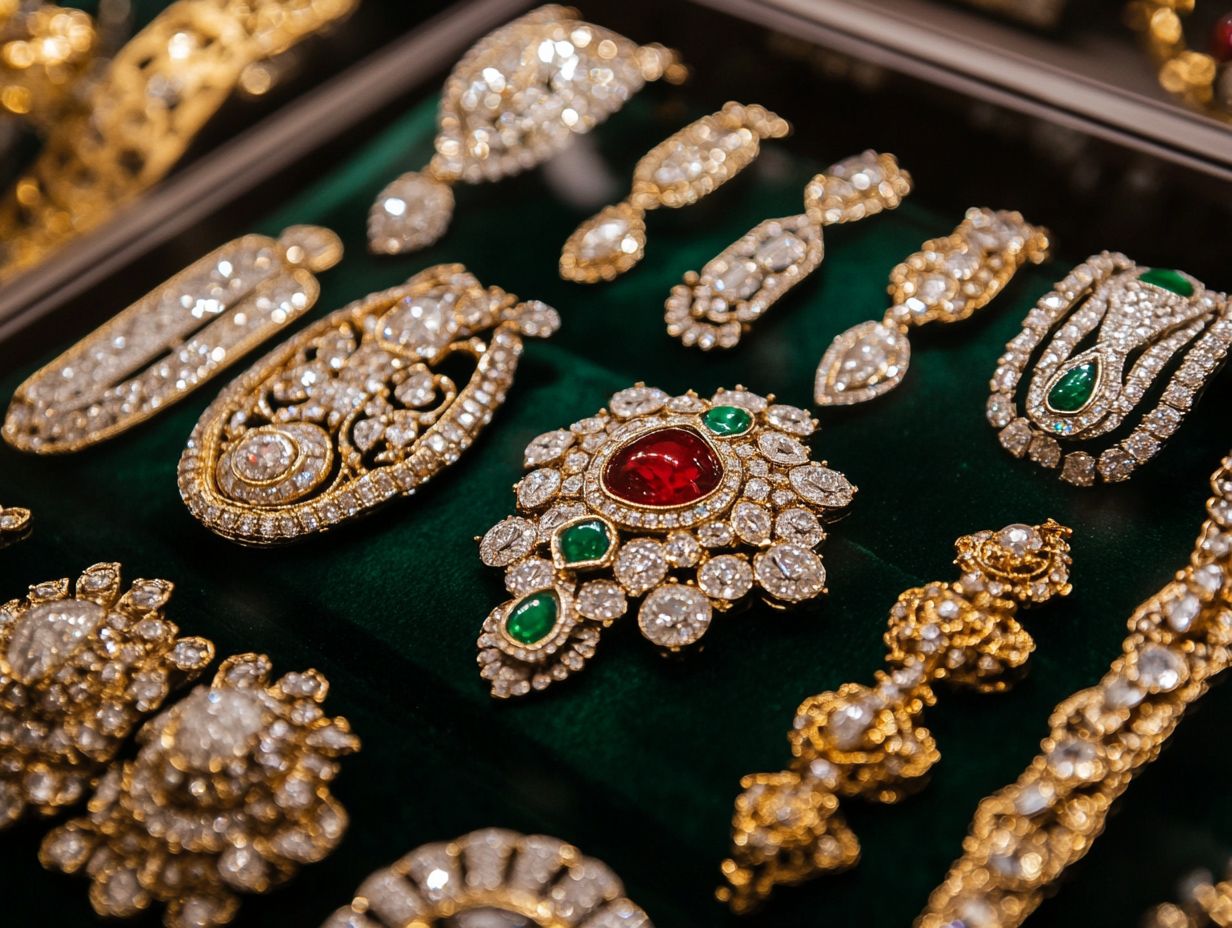
Investing in jewelry offers numerous advantages, including impressive returns, striking aesthetic appeal, and a way to shield against inflation through precious metals like gold and silver.
This investment opportunity allows you to forge an emotional connection, as each piece carries its own unique story.
Jewelry also provides a captivating way to diversify your portfolio, enhancing traditional investments like stocks and bonds.
In tough economic times, collectors often find that their cherished pieces, especially those made from highly sought-after materials, hold their value or even appreciate.
Thus, jewelry not only offers a tangible asset that you can enjoy but also serves as a reliable safeguard against market volatility and inflationary pressures.
Types of Jewelry for Investment
Numerous types of jewelry are well-suited for investment, especially those crafted from precious metals like gold, silver, and platinum.
Gemstones such as emeralds, sapphires, and rubies can notably enhance their value over time, making them a wise choice for your investment portfolio.
Gold, Silver, and Other Precious Metals
Gold, silver, platinum, and palladium stand as the pillars of jewelry investment. Each precious metal boasts unique characteristics that influence their market value and price movements.
Gold is particularly captivating for its timeless beauty and reputation as a safe haven during economic uncertainty. Silver attracts a different kind of investor due to its industrial applications in electronics and solar energy. Platinum commands a premium status because of its rarity and demand in the automotive sector, while palladium has recently gained attention for its essential role in devices that reduce harmful emissions in vehicles. Understanding the role of precious metals in a portfolio can further enhance your investment strategy.
These distinctive traits shape the metals’ desirability among investors and influence market trends. It’s crucial to make informed decisions to enhance your portfolio.
Factors to Consider When Investing in Jewelry
When investing in jewelry, consider several critical factors. Focus on the quality and authenticity of each piece, as these elements significantly influence their value.
Also, assess the current market value and be mindful of the potential financial implications that come with investment risks.
Quality, Authenticity, and Market Value
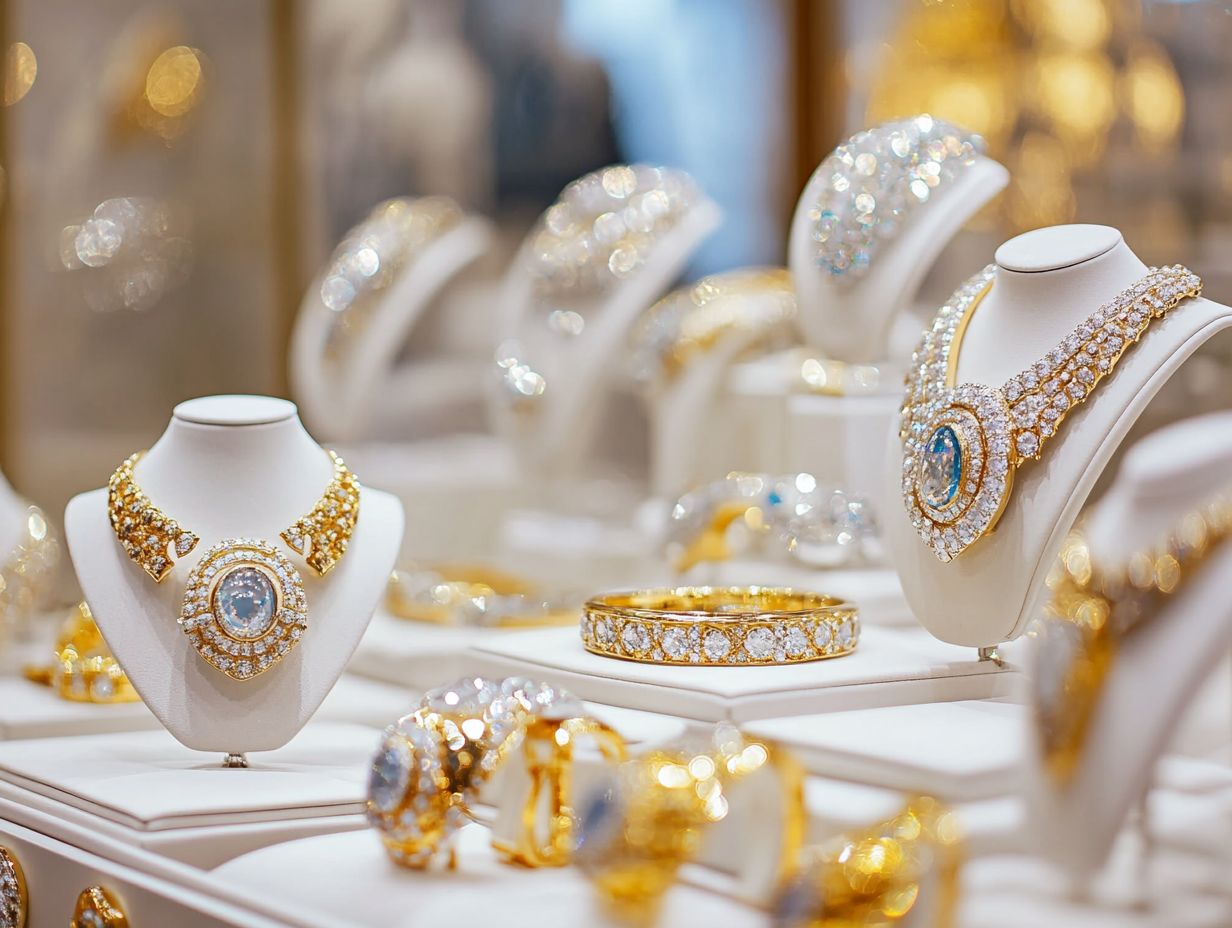
The quality and authenticity of jewelry are crucial in determining its market value and investment potential. Thorough assessments are essential for you as an investor.
Your comprehensive evaluation journey starts with understanding the grading systems used for gems and precious metals, which enables you to differentiate between various quality levels. Hallmarking serves as a key indicator of authenticity, offering insights into the material composition and the creator of each piece.
Getting professional appraisals can be a game-changer for your investment strategy! These assessments provide an objective evaluation of a piece s true worth. By recognizing the significance of grading, hallmarking, and appraisal processes, you can make informed decisions that will greatly influence your investment portfolio, ensuring you acquire pieces with genuine value in an ever-evolving market.
Tips for Investing in Jewelry
Investing in jewelry demands a strategic mindset. By adhering to expert guidance and best practices, you can greatly elevate the quality of your investment and maximize your overall returns.
Expert Advice and Best Practices
Expert advice on jewelry investment emphasizes staying well-informed about market conditions and understanding the inherent risks involved.
Successful investors suggest conducting a thorough evaluation of current trends that could influence value fluctuations, such as the rising popularity of specific gemstones or designs. Keeping an eye on economic indicators can yield valuable insights into potential market shifts.
It’s essential to assess the quality and authenticity of each piece, as these factors play a significant role in determining price. Engaging with reputable appraisers and industry professionals will help you build a comprehensive understanding of the market landscape.
Diversifying your collection is a strategy that seasoned investors use to mitigate risks while maximizing potential returns.
Frequently Asked Questions
Ready to start investing? Explore your options today!
What is the role of jewelry in precious metal investment?
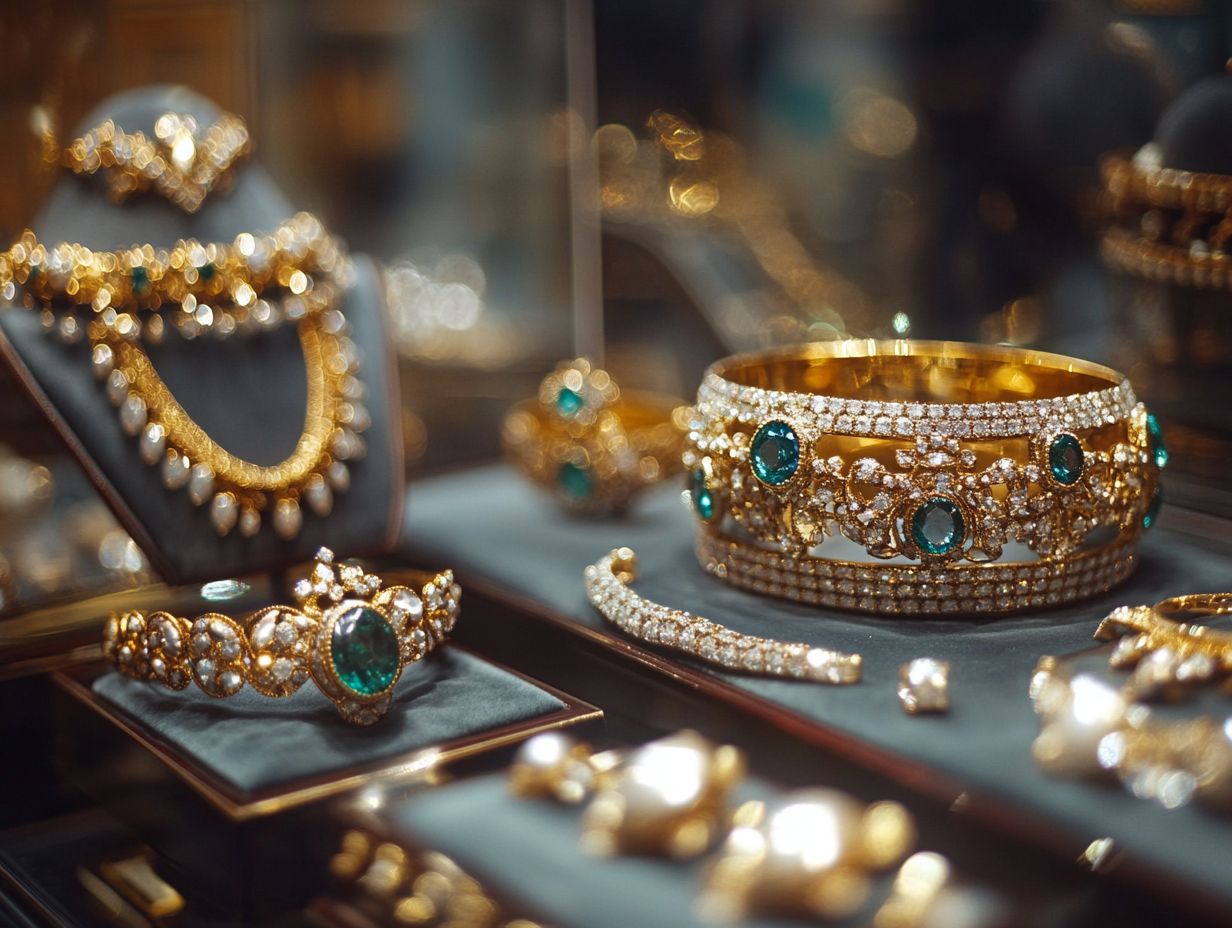
Jewelry serves a dual purpose: it adorns and it can be a smart investment. Its value comes not just from beauty but also from the precious metals it contains.
Why do people invest in precious metal jewelry?
People invest in precious metal jewelry to diversify their portfolios and protect against inflation or economic downturns. Jewelry is a tangible asset that can be easily bought and sold on the market.
What makes jewelry a valuable form of investment?
The value of jewelry is primarily based on its metal content, determined by purity and weight. Precious metals like gold, silver, and platinum have a long history of retaining value, making them reliable investments.
How does the value of jewelry compare to other forms of precious metal investment?
The value of jewelry is influenced by market demand and supply, similar to other precious metal investments. However, jewelry often holds extra value because of its craftsmanship and design, making it more subjective.
What should I consider when investing in jewelry?
When investing in jewelry, focus on the metal’s purity and weight. Don t forget to look into current market trends for informed decisions.
What are the risks associated with investing in jewelry?
With any investment, risks exist in jewelry as well. These include market demand changes, fluctuations in metal prices, and the potential for fraud or counterfeit items. Researching these factors is essential before investing.










